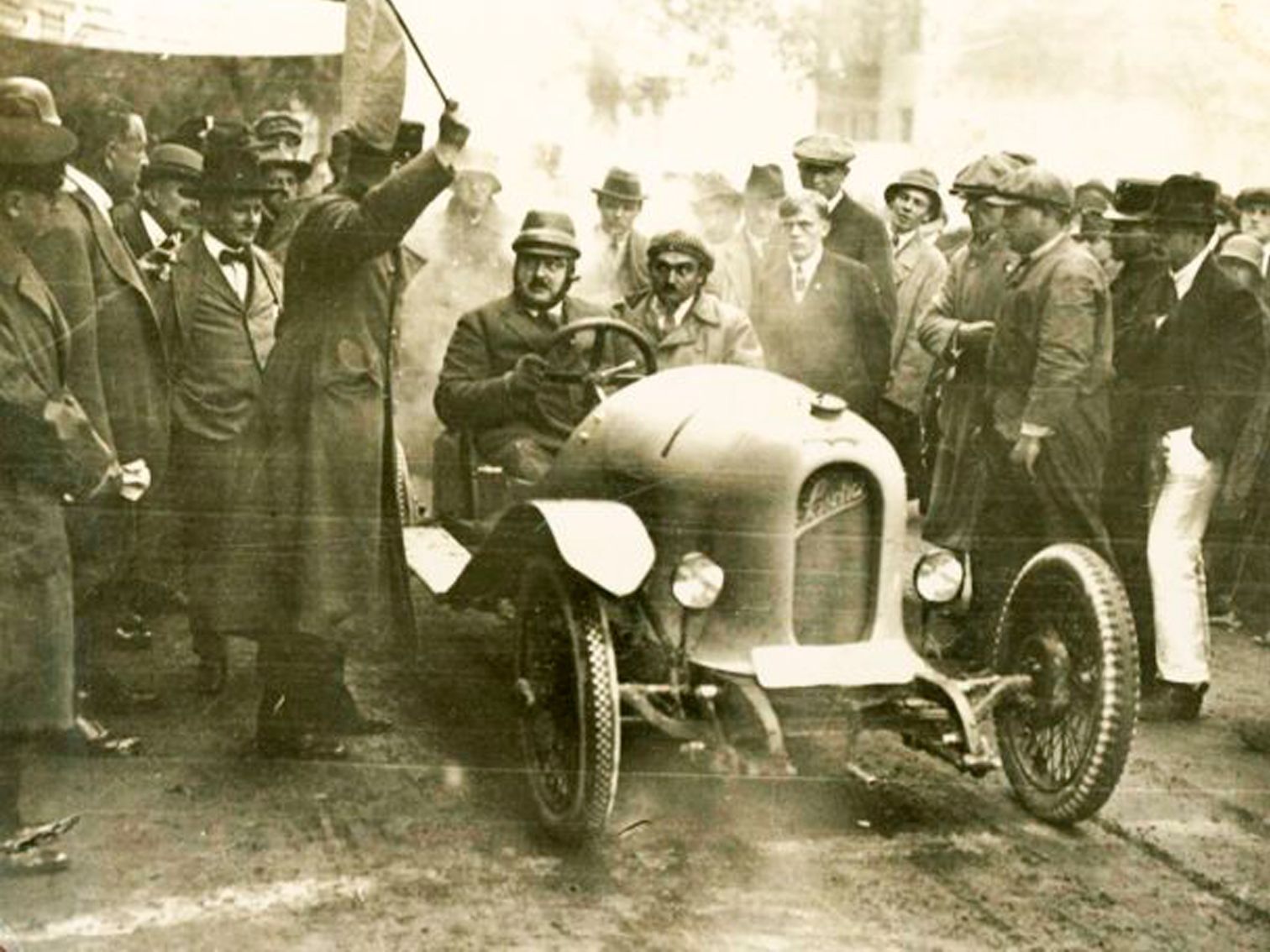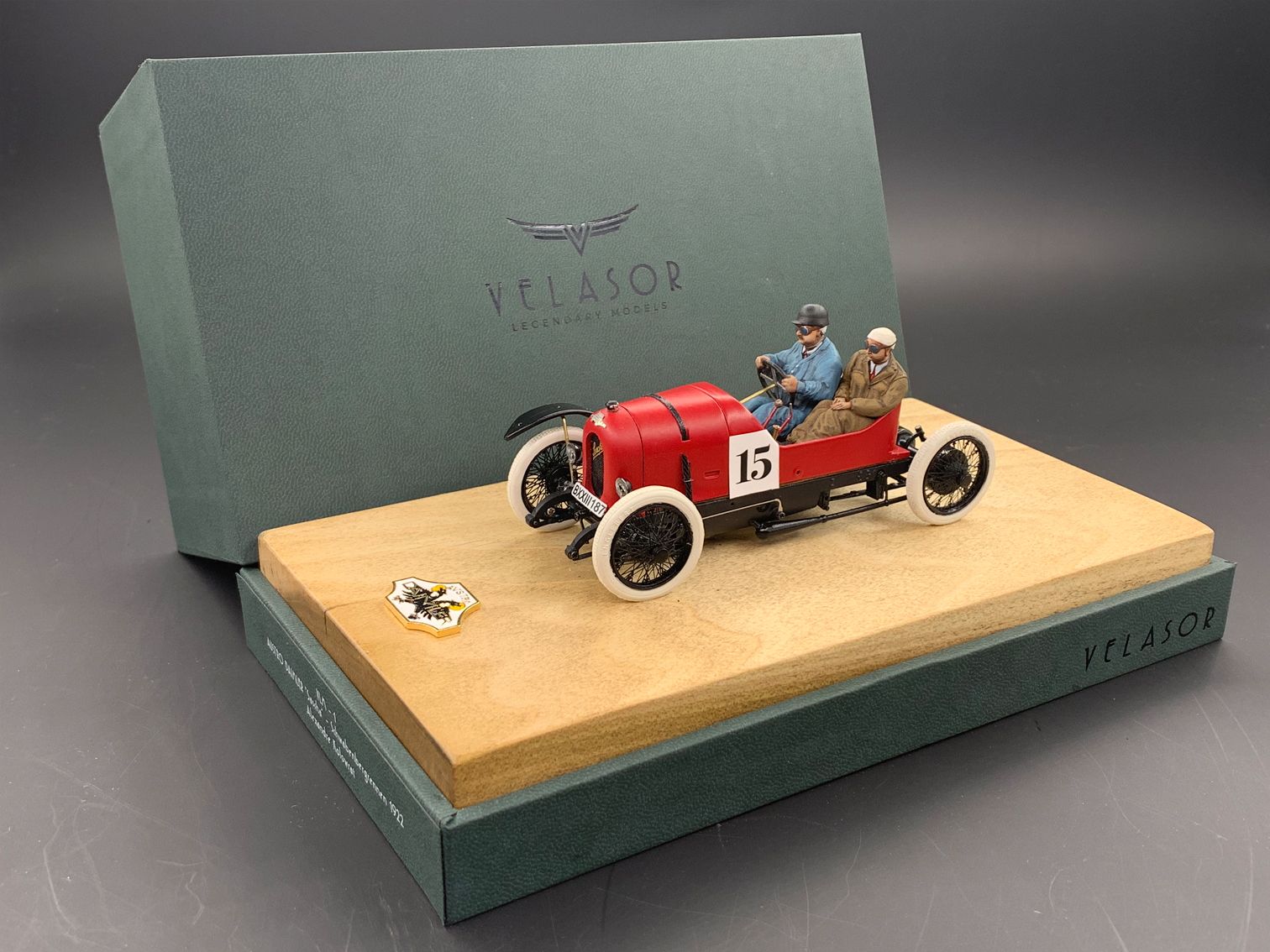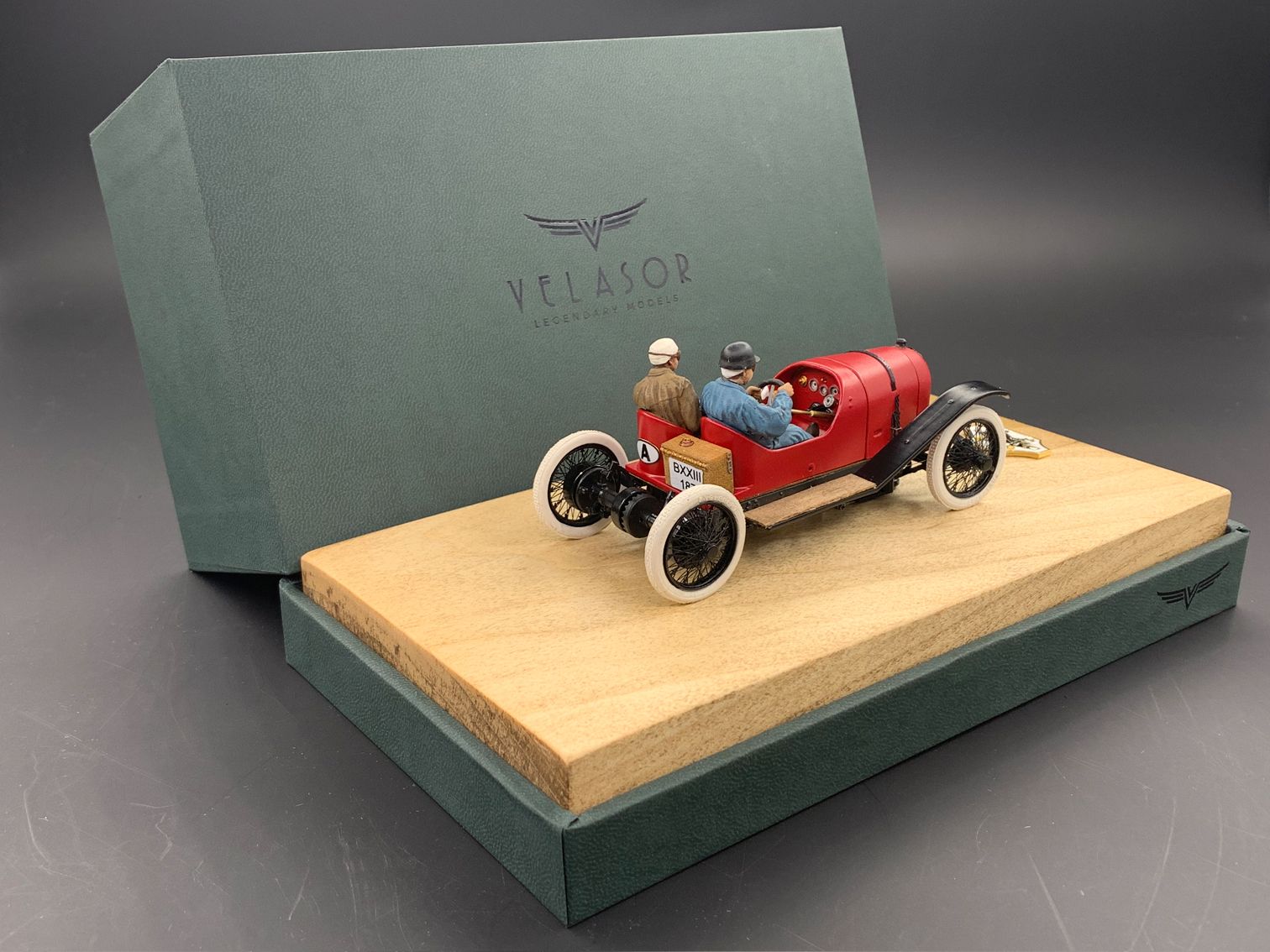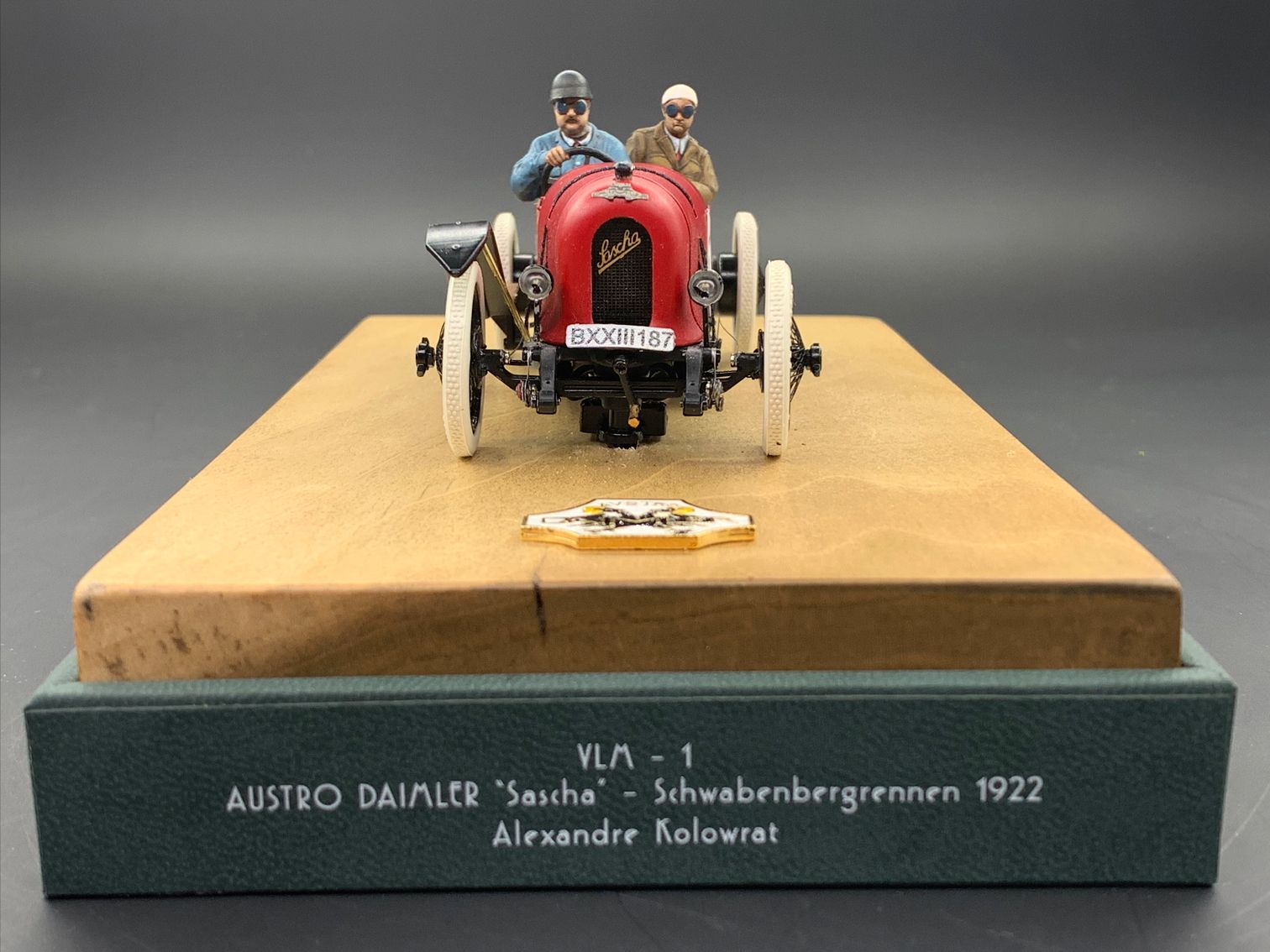1/32 Slot Car
Austro Daimler “Sascha”
Schwabenbergrennen 1922
# 15 – Alexander Kolowrat
Categorie 1,5 litre Time 5’07
ADS-R
It all started with “Sascha”, the Russian diminutive of Alexander and the nickname by which his friends knew Count Alexander Kolowrat-Krakowsky. Apart from being regarded as the forerunner of the Austrian film industry, it was he who came up with the idea of making a small racing car: the first sports car that Ferdinand Porsche built in 1922 for Austro-Daimler and which he would name “Sascha” in his honour.
This vehicle was the pinnacle of Ferdinand Porsche’s work as technical director of the Austrian company Austro-Daimler. Above all, the valve system could be considered a technical feat: thanks to two camshafts mounted on the cylinder head by a central axis, with just over a litre of displacement (1,089 cm³), the small four-cylinder reached 45hp, which allowed it to exceed 140km/h. A real milestone in the early 1920s.
With a total weight of less than 600 kilograms, the compact racing car had a sensational specific power (power-to-weight ratio). Thanks to this, the Sascha was perfect for courses with many curves, such as the famous Targa Florio of Sicily. There, in 1922, four Sascha prototypes of the official Austro-Daimler team took part, achieving a double victory in the 1.1 litre category after covering 432 kilometres. The efficient racing cars left half of the competitors behind, some of them with more than seven litres of displacement.
1/32 ADS-R Specifications:
This ADS-R has several moving and actionable parts as well as removable parts that make this 1st model a reference with high finishes and maximum faithfulness.
Technical details:
| Model nº.: |
# 15 – Alexander Kolowrat |
|---|---|
| Engine | 4 Cil. Twin cam,8 valves |
| Displacement | 1,498 cc. |
| Bore x Stroke | 72 x 92 |
| Maximum output | 50 HP / 5000 rpm. |
| Gearbox | 4 speed |
| Brakes | 4 wheels |
| Wheelbase | 2,489 mm |
| Track | 1,270 mm |
| Curv Weighy | 600 kg |
| Top Speed | 145 km/h |



